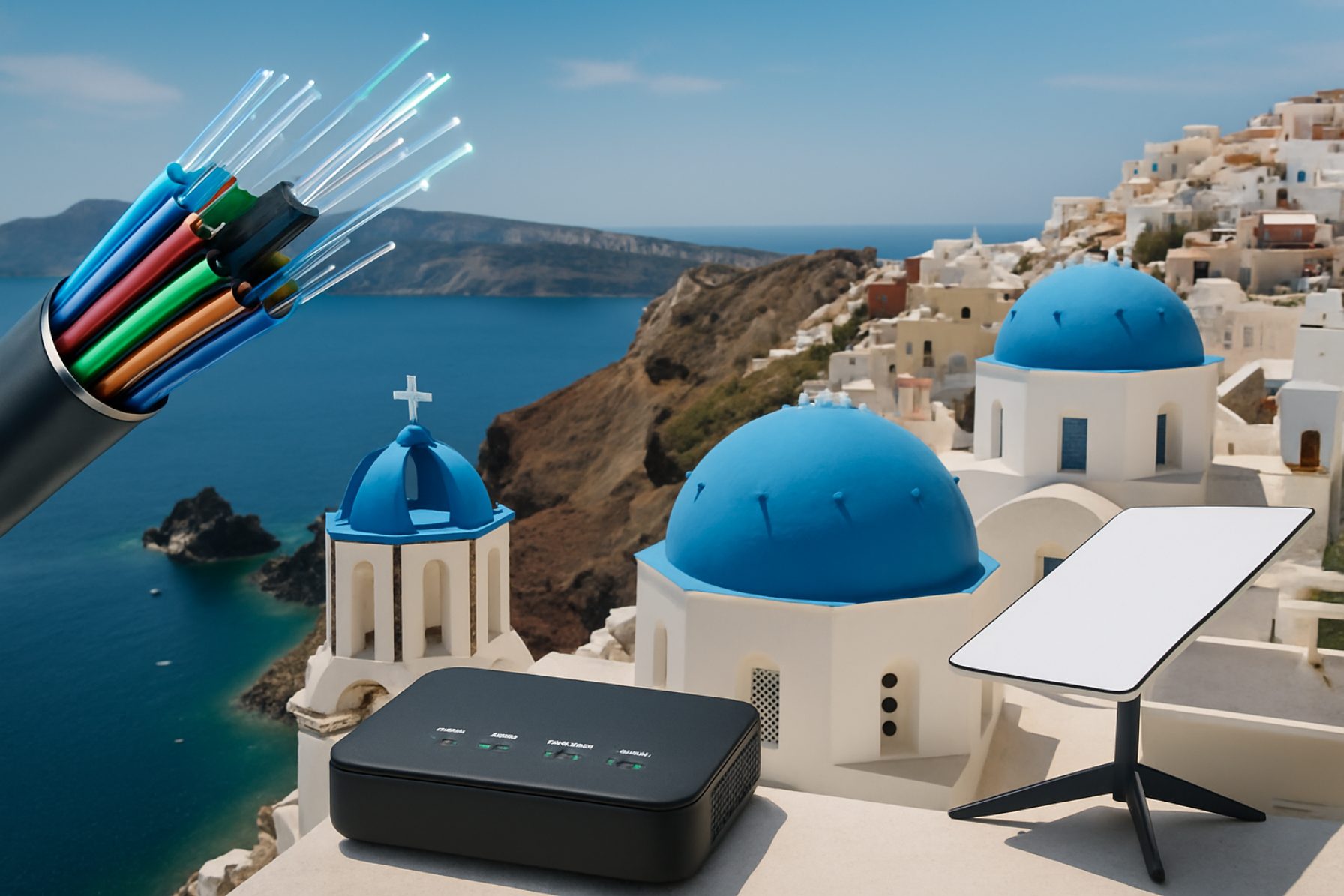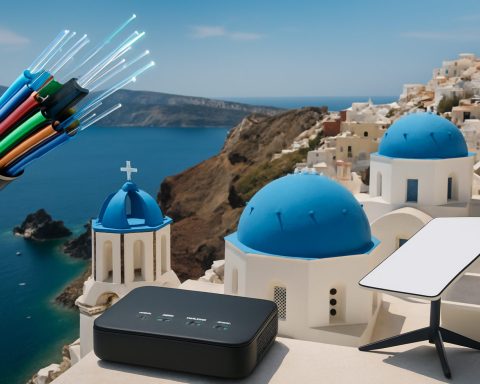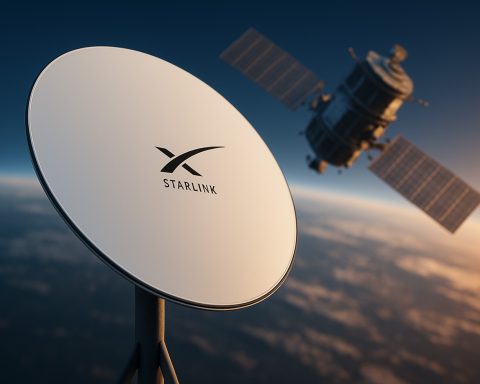Fiber-Optic Odyssey: Tracing Greece’s Journey from Legacy Networks to Next-Gen Internet Solutions
- Market Overview: Greece’s Evolving Internet Landscape
- Technology Trends: Shifting from Copper to Fiber and Satellite
- Competitive Landscape: Key Players and Market Dynamics
- Growth Forecasts: Projections for Broadband Expansion
- Regional Analysis: Connectivity Gaps and Urban-Rural Divide
- Future Outlook: Pathways to a Fully Connected Greece
- Challenges & Opportunities: Navigating Barriers and Unlocking Potential
- Sources & References
“Comprehensive Overview of Humanize AI Tools In a world where chatbots can console us and digital avatars greet customers with a smile, artificial intelligence is rapidly gaining a human touch.” (source)
Market Overview: Greece’s Evolving Internet Landscape
Greece’s internet landscape is undergoing a significant transformation, marked by a rapid shift from legacy DSL connections to high-speed fiber-optic networks and the emergence of satellite internet solutions like Starlink. This evolution is driven by both public and private investments, aiming to bridge the digital divide and enhance connectivity across urban and rural regions.
As of 2023, Greece’s fixed broadband penetration reached approximately 80% of households, but the majority of these connections were still based on copper DSL infrastructure, limiting speeds and reliability (Ekathimerini). However, the landscape is changing rapidly. The Greek government, in collaboration with the European Union, has launched the “Ultra-Fast Broadband” (UFBB) project, targeting the deployment of fiber-optic networks to over 870,000 households and businesses by 2027 (Digital Greece).
Major telecom operators such as OTE (Cosmote), Vodafone, and Wind Hellas are investing heavily in fiber-to-the-home (FTTH) infrastructure. OTE, for example, announced plans to cover 3 million households with FTTH by 2027, while Vodafone and Wind are expanding their own networks in parallel (OTE Press Release). These efforts are already yielding results: the average fixed broadband speed in Greece increased to 56.5 Mbps in 2023, up from 38.7 Mbps in 2021 (Speedtest Global Index).
In parallel, satellite internet is emerging as a viable alternative, especially for Greece’s many islands and remote mountainous areas where terrestrial infrastructure is challenging. Starlink, operated by SpaceX, officially launched services in Greece in 2022, offering speeds of up to 200 Mbps and latency as low as 20 ms (Starlink Coverage Map). This has provided a lifeline for underserved communities, enabling access to digital services, remote work, and online education.
- Fiber-optic expansion is accelerating, with FTTH coverage expected to surpass 50% of households by 2027.
- Satellite internet like Starlink is closing the connectivity gap in hard-to-reach areas.
- Government and EU funding are key drivers of infrastructure modernization.
Greece’s internet odyssey from DSL to fiber and satellite is reshaping the nation’s digital future, promising faster, more reliable, and more inclusive connectivity for all.
Technology Trends: Shifting from Copper to Fiber and Satellite
Greece’s internet infrastructure is undergoing a significant transformation, moving away from legacy copper-based DSL networks toward high-speed fiber-optic and satellite solutions. This shift is driven by the growing demand for faster, more reliable connectivity to support digital services, remote work, and economic development.
From DSL to Fiber: Accelerating Rollout
- As of early 2024, less than 20% of Greek households had access to fiber-to-the-home (FTTH), but this figure is rapidly increasing due to major investments by telecom operators (Ekathimerini).
- OTE (Cosmote), Greece’s largest telecom provider, has committed over €3 billion to expand its fiber network, aiming to reach 3 million households and businesses by 2027 (OTE Group).
- Other players, such as Nova and Vodafone Greece, are also accelerating FTTH deployments, targeting urban centers and underserved rural areas.
Government Initiatives and EU Funding
- The Greek government, supported by the European Union’s Recovery and Resilience Facility, is investing over €870 million in the “Ultra-Fast Broadband” project to bridge the digital divide (European Commission).
- These initiatives aim to provide gigabit-speed internet to more than 2.4 million citizens, especially in remote and mountainous regions.
Satellite Internet: Starlink’s Arrival
- SpaceX’s Starlink service launched in Greece in 2022, offering high-speed, low-latency internet to areas where fiber deployment is challenging (Starlink Coverage Map).
- Starlink’s presence is particularly impactful for the country’s many islands and remote villages, where traditional infrastructure is costly or impractical.
- As of 2024, Starlink provides speeds of 50–200 Mbps across most of Greece, with user numbers steadily rising (Greece Is).
In summary, Greece’s “fiber-optic odyssey” is reshaping its digital landscape. The combined efforts of telecom operators, government initiatives, and satellite providers like Starlink are propelling the country toward a future of ubiquitous, high-speed connectivity, narrowing the urban-rural digital gap and supporting Greece’s digital transformation.
Competitive Landscape: Key Players and Market Dynamics
The Greek internet landscape is undergoing a significant transformation, shifting from legacy DSL infrastructure to high-speed fiber-optic networks and, more recently, to satellite-based solutions like Starlink. This evolution is reshaping the competitive dynamics among key players and opening new opportunities for both consumers and businesses.
Key Players and Market Share
- OTE Group (Cosmote): As the incumbent operator, OTE remains the dominant force, controlling over 50% of the fixed broadband market. The company has aggressively expanded its fiber-to-the-home (FTTH) network, aiming to cover 1.8 million households by 2027 (OTE Group).
- Vodafone Greece: Vodafone is the second-largest player, investing €600 million to expand its own FTTH network, targeting 800,000 homes by 2025 (Vodafone Greece).
- Wind Hellas (now Nova): Following its merger with Nova, Wind is focusing on both urban and rural fiber rollouts, with plans to reach 1 million households by 2027 (Nova).
- Starlink: Entering the Greek market in 2022, Starlink offers satellite-based broadband with speeds up to 200 Mbps, targeting remote and underserved areas where terrestrial fiber is not yet viable (Starlink).
Market Dynamics
- Fiber Expansion: The Greek government’s “Ultra-Fast Broadband” project, co-funded by the EU, aims to accelerate fiber deployment, with a target of 2.4 million new connections by 2027 (Digital Greece).
- Rural Connectivity: While urban centers are seeing rapid fiber adoption, rural and island regions still lag. Starlink’s low-latency satellite service is bridging this gap, with over 10,000 Greek subscribers as of early 2024 (Kathimerini).
- Price Competition: Increased competition has led to a 15% drop in average broadband prices since 2021, making high-speed internet more accessible (EETT).
As Greece’s internet infrastructure evolves, the interplay between established telecoms and new entrants like Starlink is fostering innovation, improving coverage, and driving down costs, marking a new era in the nation’s digital connectivity.
Growth Forecasts: Projections for Broadband Expansion
Greece’s broadband landscape is undergoing a significant transformation, shifting from legacy DSL infrastructure to high-speed fiber-optic networks and, more recently, to satellite-based solutions like Starlink. This evolution is driven by both public and private investments, regulatory reforms, and the growing demand for reliable, ultra-fast internet connectivity across urban and rural areas.
Fiber-Optic Expansion
- As of early 2024, fiber-to-the-home (FTTH) coverage in Greece reached approximately 27% of households, a substantial increase from just 10% in 2021 (FTTH Council Europe).
- The Greek government’s “Ultra-Fast Broadband” (UFBB) project, with a budget of €870 million, aims to provide gigabit speeds to over 800,000 households and businesses by 2027 (European Commission).
- Major telecom operators such as OTE (Cosmote), Vodafone, and Wind Hellas are accelerating fiber rollouts, with OTE targeting 3 million FTTH connections by 2027 (OTE Group Annual Report 2023).
Decline of DSL and Rise of Alternatives
- DSL subscriptions have been steadily declining, dropping below 60% of total broadband lines in 2023, as consumers migrate to faster technologies (EETT Broadband Statistics).
- Fixed wireless access (FWA) and 5G are supplementing fiber in hard-to-reach areas, but satellite internet is emerging as a game-changer for Greece’s many islands and mountainous regions.
Starlink’s Impact
- Starlink, launched in Greece in 2022, now offers coverage nationwide, with speeds ranging from 50 to 200 Mbps and latency as low as 20 ms (Starlink Coverage Map).
- Starlink’s presence is particularly significant for remote communities, where terrestrial infrastructure is costly or impractical. Early adoption rates are promising, with several municipalities and businesses already subscribing to the service (Ekathimerini).
Looking ahead, Greece’s broadband market is expected to see FTTH coverage surpass 50% by 2027, while satellite and 5G will ensure near-universal access. This “fiber-optic odyssey” is positioning Greece for a digitally inclusive future, bridging the urban-rural divide and supporting economic growth.
Regional Analysis: Connectivity Gaps and Urban-Rural Divide
Greece’s internet landscape is undergoing a significant transformation, shifting from legacy DSL infrastructure toward high-speed fiber-optic networks and, more recently, satellite-based solutions like Starlink. This evolution is particularly relevant in the context of the country’s pronounced urban-rural digital divide, where connectivity gaps have historically hindered economic and social development in less populated areas.
As of 2023, fixed broadband penetration in Greece reached approximately 81% of households, but the majority of high-speed connections are concentrated in urban centers such as Athens and Thessaloniki (Ekathimerini). In these cities, fiber-to-the-home (FTTH) deployment has accelerated, with providers like Cosmote, Vodafone, and Wind investing heavily in expanding their networks. According to the Hellenic Telecommunications and Post Commission (EETT), fiber-optic subscriptions grew by over 50% year-on-year in 2022, yet only about 12% of Greek households had access to FTTH by the end of that year (EETT).
In contrast, rural and island regions continue to rely on slower DSL connections, with average speeds often falling below the EU average. The European Commission’s Digital Economy and Society Index (DESI) 2023 ranked Greece 25th out of 27 EU countries for fixed very high-capacity network (VHCN) coverage, highlighting persistent regional disparities (European Commission).
To bridge these gaps, Greece has embraced alternative technologies. The arrival of Starlink in 2022 marked a turning point for remote communities, offering broadband speeds of 100-200 Mbps even in mountainous or insular areas previously underserved by terrestrial networks (Starlink Coverage Map). Early adoption has been notable in the Cyclades and Dodecanese islands, where traditional infrastructure rollouts are logistically challenging and costly.
- Urban areas: Rapid fiber-optic expansion, higher speeds, and competitive pricing.
- Rural/island areas: Continued reliance on DSL, but growing uptake of satellite internet solutions.
- Policy initiatives: Government-backed projects like the Ultra-Fast Broadband (UFBB) initiative aim to extend fiber coverage to 750,000 additional premises by 2027 (UFBB).
In summary, while Greece’s fiber-optic odyssey is narrowing the urban-rural connectivity gap, significant disparities remain. The integration of satellite services like Starlink, alongside ongoing fiber investments, is crucial for achieving nationwide digital inclusion.
Future Outlook: Pathways to a Fully Connected Greece
Greece’s journey toward a fully connected digital future is marked by a significant transition from legacy DSL infrastructure to advanced fiber-optic networks and satellite internet solutions like Starlink. This evolution is critical for bridging the digital divide, enhancing economic competitiveness, and supporting innovation across the country’s urban and rural landscapes.
As of 2023, Greece’s fixed broadband penetration stood at 37.6% of households, with fiber-to-the-home (FTTH) connections accounting for just 5.6%—well below the EU average of 56% (European Commission DESI 2023). However, the Greek government and private sector are accelerating investments to close this gap. The “Ultra-Fast Broadband” (UFBB) project, backed by €870 million in public and private funding, aims to deliver gigabit speeds to over 800,000 households and businesses by 2027 (Ekathimerini).
Major telecom operators such as OTE, Vodafone, and Wind Hellas are rapidly expanding their fiber networks. OTE, for example, plans to connect 3 million premises to FTTH by 2027 (OTE Group). These efforts are complemented by regulatory reforms and incentives designed to streamline deployment and encourage competition.
For Greece’s remote islands and mountainous regions, where fiber deployment is challenging, satellite internet is emerging as a viable alternative. Starlink, SpaceX’s low-Earth orbit satellite service, launched in Greece in 2022 and now offers download speeds exceeding 100 Mbps in most areas (Starlink Coverage Map). This technology is particularly transformative for communities previously underserved by terrestrial networks, enabling access to e-government, telemedicine, and digital education services.
Looking ahead, Greece’s digital transformation hinges on the successful integration of fiber and satellite technologies. The government’s National Broadband Plan targets nationwide gigabit coverage by 2030, aligning with the EU’s Digital Decade goals (EU Digital Decade). If current momentum continues, Greece is poised to leapfrog from laggard to leader in digital connectivity, unlocking new opportunities for its citizens and economy.
Challenges & Opportunities: Navigating Barriers and Unlocking Potential
Greece’s journey from legacy DSL infrastructure to cutting-edge fiber-optic and satellite internet is marked by both significant challenges and promising opportunities. The country’s digital transformation is crucial for economic growth, social inclusion, and competitiveness in the European digital economy.
-
Challenges:
- Legacy Infrastructure: As of 2023, a large portion of Greek households still rely on copper-based DSL connections, with only about 20% having access to fiber-to-the-home (FTTH) networks (Eurostat). The slow pace of fiber rollout is partly due to the country’s mountainous terrain and the high cost of upgrading existing networks.
- Investment Gaps: Despite EU funding, Greece’s per capita investment in broadband infrastructure lags behind the EU average (European Commission DESI). Regulatory hurdles and bureaucratic delays further slow down deployment.
- Digital Divide: Rural and island regions face persistent connectivity gaps, with some areas still experiencing speeds below 10 Mbps. This digital divide hampers access to e-government, education, and telemedicine services.
-
Opportunities:
- Fiber Expansion: Major telecom operators, such as OTE and Nova, have announced ambitious plans to expand FTTH coverage to over 3 million households by 2027 (OTE Group). This will significantly boost average speeds and reliability.
- Starlink and Satellite Internet: The arrival of SpaceX’s Starlink in Greece in 2022 has begun to bridge the connectivity gap in remote and island communities, offering speeds up to 200 Mbps (Starlink Coverage Map). This is a game-changer for areas where terrestrial infrastructure is impractical.
- EU Digital Decade Targets: Greece is leveraging EU Recovery and Resilience Facility funds to accelerate digital infrastructure projects, aiming to meet the EU’s 2030 target of gigabit connectivity for all (European Digital Decade).
In summary, while Greece faces structural and geographic barriers in its fiber-optic odyssey, strategic investments and new technologies like Starlink are unlocking unprecedented potential for nationwide digital inclusion and economic modernization.
Sources & References
- Fiber-Optic Odyssey: How Greece’s Internet Is Evolving from DSL to Starlink
- Ekathimerini
- OTE Group Annual Report 2023
- Speedtest Global Index
- Starlink Coverage Map
- European Digital Decade
- Greece Is
- Vodafone Greece
- Nova
- Kathimerini
- EETT
- FTTH Council Europe
- Eurostat









